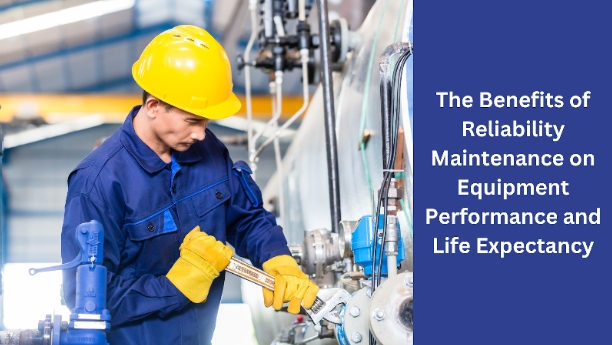Uncertainty is a significant term. Uncertainty plays a significant role in both our personal and professional lives. But, the impact of uncertainty varies. All industries face uncertainty in their daily operations, especially regarding a multi-million dollar plant or industry. From a minute incident to the breakdown of million-dollar assets or even personnel injuries, the industry or the plant certainly feels the butterfly effect of that incident. You might wonder if there is a way to anticipate uncertainty. Actually no. But that doesn’t mean there is no way to mitigate those uncertainties. And that is where maintenance management comes into play.
So, what is maintenance management? Or, more importantly, what are the benefits of reliable maintenance on equipment performance and life expectancy?
Maintenance Management– What Is It?
To describe in one sentence, the cumulation of planning, organizing, and controlling the implemented actions to maintain the assets in an organization properly is known as maintenance management.
Maintenance management involves finding a way to optimize the performance of the assets by bringing down the machine downtime and risk associated with the downtime. Finding unknown variables is a part of maintenance management.
Maintenance management can be easy as pie on paper, but it can be pretty complex. But proper maintenance management can bring many benefits and turn unplanned and unorganized maintenance into high-quality repair with NO high maintenance cost.
Benefits of Reliability Maintenance on Equipment Performance and Life Expectancy
First and foremost, it’s important to note that maintenance management is synonymous with reliability maintenance. Both approaches aim to improve the equipment or machine’s life expectancy.
And both are interchangeable. Second, the benefits. There are seven core benefits that you can expect when you implement reliability maintenance.
Improved Machine Performance
Reliability maintenance is all about planned maintenance. Regular maintenance can reduce equipment downtime by 70%. Frequent maintenance involves calibration, lubrication, cleaning, and inspection. The remaining 30% involves in those processes. Having reliable and frequent maintenance can identify the potential target sooner and address the issue. This reduces machine downtime. Low downtimes mean improved performance and result in more output.
Improved Machine Reliability
Identifying issues beforehand is a key aspect of reliability. But we know there are a lot of unknown variables in a plant or an organization. So, how to increase reliability? You may not be aware, but you indirectly increase the machine’s reliability by performing frequent maintenance and swapping out components. Regular maintenance helps you identify the problems that can cause serious issues. So, having reliable maintenance helps to reduce the likelihood of machine breakdowns. Less machine breakdown means the reliability of the machine.
Improved Machine Life
The result of the first two benefits, machine performance and reliability, is enhanced machine life. If you think about frequent maintenance, which involves replacing parts, calibration, lubrication, and cleaning, it ultimately helps the machine to function longer than expected. A longer machine lifespan translates to reduced replacement and maintenance costs.
Speaking of cost,
Reliable Maintenance Saves Money
Reliable maintenance helps prevent sudden accidents that can result in costly repairs or replacements by identifying and resolving issues promptly. Not only does it save a lot of time, but it also saves money that can be used to explore the area, which can help streamline the process or operation. Also, the downtime was reduced. If you observe closely, you’ll notice that all these benefits are interconnected. As said in the beginning, uncertainty has a butterfly effect. The same thing can be said for reliable maintenance.
Improved Safety
Accidents to personnel tend to happen in an industry. It can be human, machine, or even environmental errors. Two approaches can be taken to ensure personnel safety. First, providing reliability training to the employees on-site to build their awareness and skill about safety. With this, it is possible to eliminate human error. Second, the environmental and machine error. Reliable maintenance can also quickly mitigate these factors. As said reliable maintenance objective is to ensure all the equipment/machines are working properly. If proper reliable maintenance is implemented, it can reduce the risk of employee accidents or injuries. Safety guidelines and adherence to that guidelines are also a part of reliable maintenance.
Speaking of safety,
Regulation Compliance
Different industries have different safety guidelines. Reliable maintenance considers these compliances and helps meet these requirements. Proper documentation of other maintenance processes enables compliance with regulatory requirements and helps organizations avoid penalties.
Improve Equipment Utilization
One of the core requirements for any industry is to maximize equipment utilization with minimal downtime. Reliable maintenance helps achieve that. Frequent maintenance helps the machine achieve peak performance, improve productivity, and eliminate obstacles. Efficient resource allocation leads to optimal equipment utilization.
Final Thoughts
In conclusion, it is crucial to emphasize the importance of reliable maintenance for any industry, regardless of its nature. It has a direct hand in improving the overall performance of the plant or organization, improving reliability, and ultimately increasing the longevity of the machine/equipment. Reliable maintenance is critical to achieving organizational goals and ensuring high customer satisfaction. This article aims to raise awareness about the significance of reliable maintenance for efficient operations in organizations or plants.


